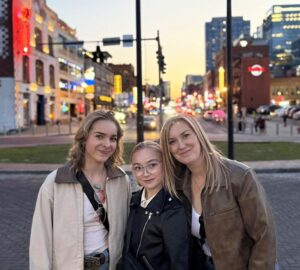
Early afternoon on Friday, August 3, resident Tiffany Fath received a piece of registered mail from the Town of Whitecourt. Upon opening it, she discovered a fine for $250 due to not having an established patch of grass on her boulevard which was required of her as part of the Residential Boulevard Program. She immediately took to social media to share her frustration with friends in a Facebook post that has since garnered over 110 shares and well over 200 comments from like-minded residents, several of whom had received their own tickets.
Wendy Grimstad-Davidson, Manager of Planning and Development said that back in 2014 and 2015 they did a major revamp of the town’s Land Use Bylaw which included a lot of public consultations and feedback through open houses. She said during those discussions it was brought up to them repeatedly that the gravel driveways were not attractive. Among other issues mentioned, residents who attended said they didn’t like the gravel on the sidewalks. The boulevard program officially started in 2015 and it initially focused on the areas that had received the most complaints including Poplar Drive, Blueberry Drive, and Wellwood Crescent. “That was our Phase one,” said Grimstad-Davidson.
Fath lives on Spruce Road which is in Phase two. She said she understands extended driveways take away from on-street parking but feels that each street should be assessed differently. “My street is a cul-de-sac and we don’t have room for on-street parking whether my boulevard is grass or not. There simply is no room.” Her husband had been parking his work truck on the gravel pad beside their driveway but can no longer do so due to the grass boulevard. “It’s a useless spot for us now,” she said.
Development Officer Stephanie Schaffner said residents can access extended parking areas beside their homes by going through their own driveways and maneuvering into designated spots, but the boulevard areas must be kept landscaped to comply with the bylaw. “We don’t have a problem if someone has to drive over their grass boulevard occasionally especially when you’re talking about recreational vehicle parking because that would be a maximum of twice a week.” She said minimal use such as that shouldn’t damage the grass once it’s established.
Amanda Stanchfield is one of Fath’s neighbours and said when they were finalizing the plans for their home it included recreational vehicle parking on one side. In having the project given the green light by the town, she was under the impression they would be able to have access to that parking from the street. She said she has put forward ideas for rock landscaping that would allow her to use the parking but has been denied.
When asked why, Grimstad-Davidson said homeowners can have RV parking beside their homes but that the space between the property line and the curb needs to be grass because the driveway can only be so wide. Since 1989, driveways could be either six or 7.25 metres between the property line and the curb depending on the property frontage. “Over the course of time, homeowners have expanded that additional parking which was graveled all the way to the property line. Essentially, that was expanding the driveway by another three metres. So, we were ending up with driveways that were anywhere from nine to 10 metres wide.” Given that people can’t park in front of a driveway those wide driveways were taking away from on-street parking.
The Residential Boulevard Program is generalized but Grimstad-Davidson said they recognize there are individual properties that may have specific needs. “We always say when we send out our notices that if you have any questions please call us. If there’s a special circumstance, we’re willing to talk to them and try and come up with a solution that works for everyone.”
Fath and Stanchfield said they hope resolutions can be made to help make their properties as useful as they once were. “I want to see it beautiful too, but I also want it to be functional,” said Stanchfield, adding that grass isn’t practical in all cases. “I’m reseeding constantly, so it’s always going to be a cost and it’s not going to look very nice over time.”
Both women also said that they hope to see more information provided with the notices because Fath thought she had complied with hers only to end up receiving a fine anyway. “It didn’t say that the grass had to be established just that the project needed to be completed by June 30 and it was completed. We had seeded the area and it was starting to come in,” said Fath.
“My notice said they came by and looked at it on July 4, but I didn’t get the notice until three weeks later and, by that point, it was well established. My assessment and my notice should have come at the same time not three weeks apart. I also had a friend put down sod and she was told it wasn’t established either which I don’t understand at all,” she concluded. Providing homeowners comply with the notices by September 30 the fines will be waived but Fath said she feels it was a waste of taxpayers’ money to send out tickets that probably won’t be paid anyway. “There are so many frustrated citizens evidenced by the number of comments on my Facebook post, and we all feel like we have been given different answers to the same questions.”
Those seeking more information about the Residential Boulevard Program are urged to visit www.whitecourt.ca. “If you have questions about what you can and cannot do, then ask us because that’s our job to provide those answers. If we can come to a solution that meets the intent of the bylaw then we’re willing to do that,” said Grimstad-Davidson.







More Stories
Birthday party chaos sung beautifully by Pumpjack Players’ youth in spring musical
Gearing up for another season of cars, cruising and camaraderie
Big dreams lead a talented local youth to Nashville